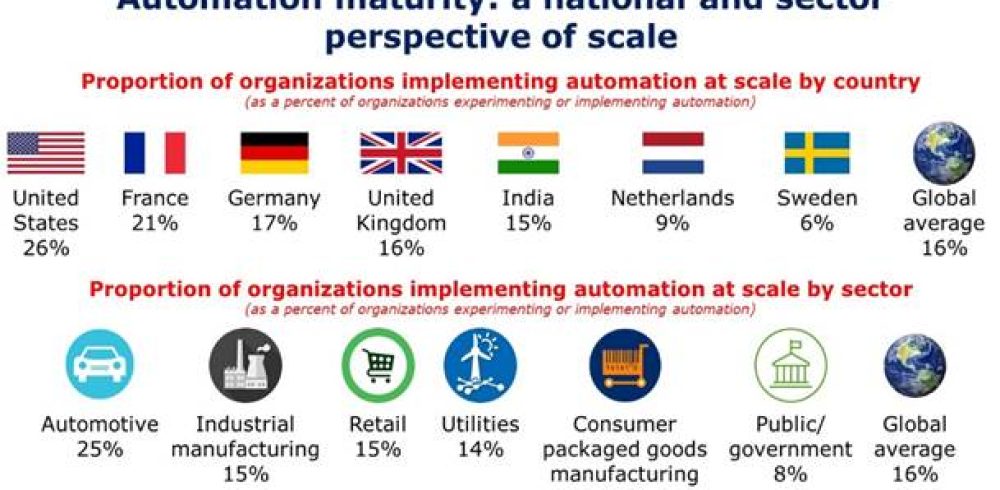Less than a fifth (16%) of global organisations are adopting multiple automation use cases at scale, focusing on operational gains versus strategic long-term growth. This report by the Capgemini Research Institute found that over 40% of businesses have cited that the number one objective behind automation initiatives is to improve quality, and only 23% are looking to gain incremental revenue.
The ‘Reshaping the future: Unlocking automation’s untapped value’ report surveyed over 700 executives from companies that are experimenting with or implementing automation solutions, analysing over 110 real-world use cases across six sectors. It showed that Automotive leads the way in wide-scale deployments.
Out of the surveyed organisations that are already implementing automation, 25% are using it at scale in the Automotive sector, followed by Industrial Manufacturing and Retail, both at 15%. From a country perspective, the US (26%), France (21%) and Germany (17%) are at the forefront of adopting automation technologies at scale.
In contrast, over a third (36%) of organisations are focusing on ‘case by case’ implementations in areas such as data entry or storage automation. The report found that these deployments are not as scalable, they are difficult to implement and may not deliver large returns.
“With only 16% of organizations, having implemented multiple automation use cases at scale, automation presents huge potential to drive both efficiency gains and business value. We should learn from those use cases in automation today and look to some of the ‘quick wins’ to drive uptake and return on investment,” said Ashwin Yardi, Chief Industrialization and Automation Officer and India COO.
“Leaders need a bold vision and a clear roadmap to build momentum and bring the organization behind them. It needs to be recognized that automation is a technology solution to business transformation, and hence both business and technology leadership should be engaged actively from day one. Automation needs to be tackled as an end-to-end strategic transformation program as opposed to a series of tactical deployments. Transformation should also be a two-way conversation, with employees encouraged to suggest automation initiatives. Combine all of this with buy-in from the executive leadership team and organizations will find automation a powerful and rewarding business enabler,” he added.















